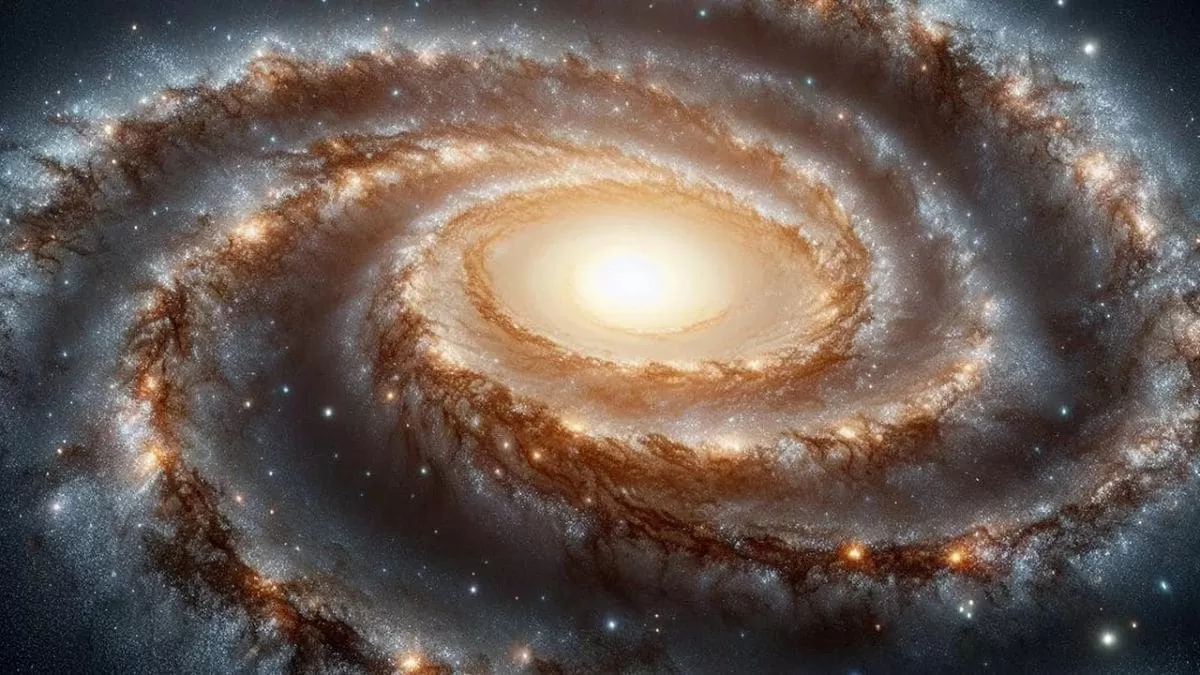Researchers have long been searching for answers to the mysteries of the universe, and one of the biggest enigmas has been the existence of dark matter. This elusive substance, which makes up about 85% of the universe’s mass, has been a subject of intense study and speculation for decades. Now, a team of researchers has proposed a new theory that could potentially shed light on the nature of dark matter and its role in shaping our galaxy.
The Milky Way’s Central Molecular Zone (CMZ) is a region at the center of our galaxy that is filled with dense clouds of gas and dust. It is also home to a high concentration of cosmic rays, which are high-energy particles that constantly bombard the Earth’s atmosphere. These cosmic rays are believed to be produced by supernovae, the explosive deaths of massive stars. However, recent observations have shown that the ionization levels in the CMZ are much higher than what can be explained by supernovae alone.
This discrepancy has puzzled scientists for years, but a team of researchers from the University of California, Irvine, has come up with a new explanation. They propose that a type of dark matter known as “lightweight, self-annihilating dark matter” could be responsible for the excess ionization in the CMZ. This theory challenges the conventional view that dark matter is made up of heavy, slow-moving particles.
According to the researchers, these lightweight dark matter particles could be producing electrons and positrons, which are the antimatter counterparts of electrons. When these particles collide, they annihilate each other, releasing a burst of energy in the form of gamma rays. This process could explain the high levels of ionization in the CMZ, as well as the excess of gamma rays observed in the region.
The team’s findings, which were published in the journal Physical Review Letters, have sparked excitement among the scientific community. If their theory is correct, it could provide a new way to detect and study dark matter, which has so far eluded all attempts at direct detection. It could also help us understand the role of dark matter in shaping the structure of our galaxy.
The proposed dark matter particles are incredibly lightweight, with a mass of only a few billionths of an electron’s mass. This makes them difficult to detect, but the researchers believe that they could leave a unique signature in the form of gamma rays. They suggest that future observations using gamma-ray telescopes could confirm or refute their theory.
The team’s findings also have implications for our understanding of cosmic chemistry. The high levels of ionization in the CMZ could be influencing the chemical reactions that take place in this region, leading to the formation of complex molecules that are essential for life. This could have significant implications for the search for extraterrestrial life, as the CMZ is believed to be a potential breeding ground for habitable planets.
The proposed theory is a departure from the traditional view of dark matter as a slow-moving, heavy substance. It challenges scientists to think outside the box and consider alternative explanations for the mysteries of the universe. If confirmed, it could revolutionize our understanding of dark matter and its role in shaping the cosmos.
However, the researchers are quick to point out that their theory is still in its early stages and requires further testing and validation. They are currently working on developing more sophisticated models to better understand the behavior of these lightweight dark matter particles. They also hope that their findings will inspire other scientists to explore new avenues in the search for dark matter.
The study of dark matter is a complex and challenging field, but it is also one of the most exciting and promising areas of research in modern physics. The proposed theory by the team at the University of California, Irvine, is a testament to the power of human curiosity and the relentless pursuit of knowledge. It offers a new perspective on the nature of dark matter and opens up new possibilities for unraveling the mysteries of the universe.
In conclusion, the researchers’ proposal of a new dark matter candidate to explain the unusual ionization levels in the CMZ is a significant development in the field of astrophysics. It challenges conventional views and offers a new way to detect and study dark matter. If confirmed, it could have far-reaching implications for our understanding of the universe and our place in it. As we continue to explore the depths of space, we can only hope that more groundbreaking discoveries like this will continue to push the boundaries of our knowledge and inspire us to keep asking questions about the mysteries








